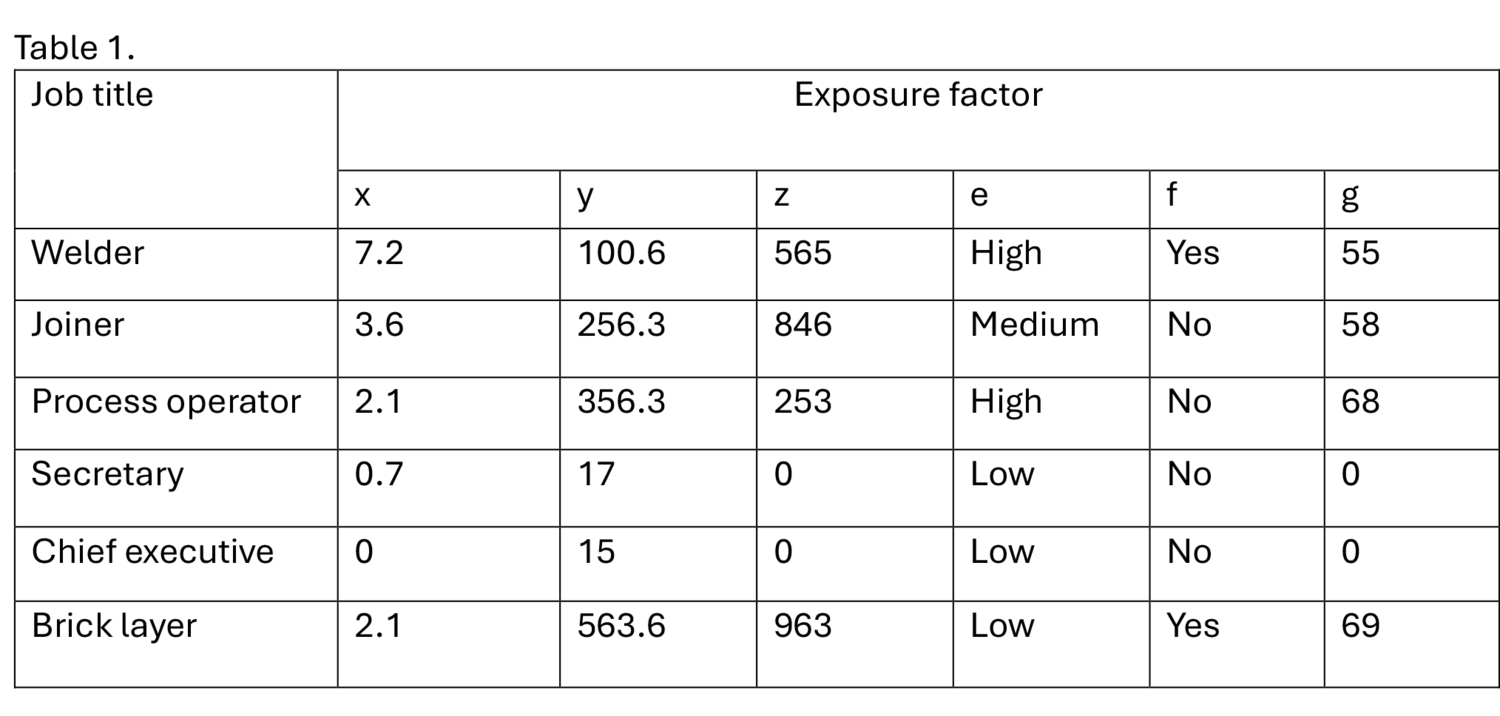EuroJEM - What is a JEM?
Traditional Job Exposure Matrices (JEMs) are used to link job titles with exposure data for various factors, such as chemicals, physical hazards, or musculoskeletal and psychosocial risks. In their simplest form, JEMs are cross-tabulations, where one axis represents job titles, and the other indicates whether workers in each job are exposed to a particular substance or risk factor. This is typically represented in a binary format (yes/no).
The basic JEM can be expanded by replacing the binary exposure data with estimates of exposure intensity. These can be semi-quantitative (e.g., using categories like low, medium, or high) or fully quantitative (e.g., specifying concentrations of a substance).
To further enhance the JEM, additional parameters can be introduced. These may include the probability of exposure (often defined as the proportion of workers exposed within a given job title), the uncertainty surrounding exposure estimates, or time-based multipliers to account for changes in exposure levels over time. An example of how a JEM could look like is presented in Table 1.

JEMs can describe exposures either for the general working population, in which case they will typically include job categories mirroring those of an occupational coding system, or for specific industrial sectors, in which case bespoke job categories may be used. JEMs constitute a simple and straightforward method of translating job-related information into specific exposures in a standardized way. Gender-specific JEMs have been developed for some exposures with systematic differences in exposure between men and women carrying the same occupational code (e.g. ergonomic and psycho-social exposures)
Beyond this, when implemented on occupational histories, JEMs have relatively low costs and offer exposure estimates that are unbiased differentially to the disease status. However, they also possess significant limitations, as they generally ignore differences in exposures within jobs (e.g., across different companies, sectors, countries and time periods). Accordingly, the addition of additional elements (or axes), such as period and country, is important for improving utility.
JEMs are generally very useful in reproducing exposure estimates when such information is absent, e.g., if no exposure measurements or model-based estimates are available, or for historical exposures. JEMs can also be constructed for emerging or new exposures when sufficient data is available.
